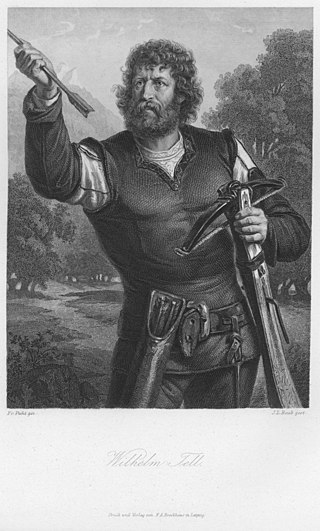
George Bernard Shaw, known at his insistence as Bernard Shaw, was an Irish playwright, critic, polemicist and political activist. His influence on Western theatre, culture and politics extended from the 1880s to his death and beyond. He wrote more than sixty plays, including major works such as Man and Superman (1902), Pygmalion (1913) and Saint Joan (1923). With a range incorporating both contemporary satire and historical allegory, Shaw became the leading dramatist of his generation, and in 1925 was awarded the Nobel Prize in Literature.

Back to Methuselah (A Metabiological Pentateuch) by George Bernard Shaw consists of a preface (The Infidel Half Century) and a series of five plays: In the Beginning: B.C. 4004 (In the Garden of Eden), The Gospel of the Brothers Barnabas: Present Day, The Thing Happens: A.D. 2170, Tragedy of an Elderly Gentleman: A.D. 3000, and As Far as Thought Can Reach: A.D. 31,920.

Saint Joan is a play by George Bernard Shaw about 15th-century French military figure Joan of Arc. Premiering in 1923, three years after her canonization by the Roman Catholic Church, the play reflects Shaw's belief that the people involved in Joan's trial acted according to what they thought was right.

Heartbreak House: A Fantasia in the Russian Manner on English Themes is a play written by Bernard Shaw during the First World War, published in 1919 and first performed in November 1920 at the Garrick Theatre, New York, followed by a West End production the following year.

William Tell is a drama written by Friedrich Schiller in 1804. The story focuses on the legendary Swiss marksman William Tell as part of the greater Swiss struggle for independence from the Habsburg Empire in the early 14th century. Gioachino Rossini's four-act opera Guillaume Tell was written to a French adaptation of Schiller's play.

Charlotte Frances Payne-Townshend was an Irish political activist in Britain. She was a member of the Fabian Society and was dedicated to the struggle for women's rights. She married the playwright George Bernard Shaw.

Strange Cargo is a 1940 American romantic drama film directed by Frank Borzage and starring Clark Gable and Joan Crawford in a story about a group of fugitive prisoners from a French penal colony. The adapted screenplay by Lawrence Hazard was based upon the 1936 novel, Not Too Narrow, Not Too Deep, by Richard Sale. The film was produced by Joseph L. Mankiewicz for Metro-Goldwyn-Mayer; it was the eighth and last film pairing of Crawford and Gable, and the first Gable picture released in the wake of Gone with the Wind. The supporting cast includes Ian Hunter, Paul Lukas, Eduardo Ciannelli, and Peter Lorre.
William Shakespeare's play Romeo and Juliet, set in Verona, Italy, features the eponymous protagonists Romeo Montague and Juliet Capulet. The cast of characters also includes members of their respective families and households; Prince Escalus, the city's ruler, and his kinsman, Count Paris; and various unaffiliated characters such as Friar Laurence and the Chorus. In addition, the play contains two ghost characters and an unseen character (Rosaline).

The White Sister is a 1923 American silent drama film starring Lillian Gish and Ronald Colman, directed by Henry King, and belatedly released by Metro Pictures. It was based on the 1909 play of the same name by Francis Marion Crawford and Walter C. Hackett. It is the second of four adaptations of the play, preceded by a 1915 production and followed by a 1933 sound film, starring Helen Hayes and Clark Gable, and a 1960 Mexican production.

Ergastolo is a black and white 1952 Italian crime melodrama film directed by Luigi Capuano.

Atto di dolore is an Italian film released in 1990. It stars Claudia Cardinale.

Village Wooing, A Comedietta for Two Voices is a play by George Bernard Shaw, written in 1933 and first performed in 1934. It has only two characters, hence the subtitle "a comedietta for two voices". The first scene takes place aboard a liner, and the second in a village shop. The characters are known only as "A" and "Z".

The Shewing-Up of Blanco Posnet: A Sermon in Crude Melodrama is a one-act play by George Bernard Shaw, first produced in 1909. Shaw describes the play as a religious tract in dramatic form.

Passion, Poison, and Petrifaction is a short play by Bernard Shaw, subtitled The Fatal Gazogene: a Brief Tragedy for Barns and Booths. It is a comic mock-melodrama, written to raise funds for charity. It has been revived occasionally, in tandem with other short works by Shaw or by other playwrights.

Why She Would Not: A Little Comedy (1950) is the last play written by George Bernard Shaw, comprising five short scenes. The play may or may not have been completed at his death. It was published six years later.

Geneva, a Fancied Page of History in Three Acts (1938) is a topical play by George Bernard Shaw. It describes a summit meeting designed to contain the increasingly dangerous behaviour of three dictators, Herr Battler, Signor Bombardone, and General Flanco.

The Music Cure, a Piece of Utter Nonsense (1913) is a short comedy sketch by George Bernard Shaw, satirising therapeutic fads of the era and the Marconi scandal of 1912.

The Fascinating Foundling (1909) is a short comic play by George Bernard Shaw. Shaw classified it as one of his "tomfooleries". He was so unimpressed with his own work that the published text was humorously subtitled "a Disgrace to the Author".

The Young Idea, subtitled "A comedy of youth in three acts", is an early play by Noël Coward, written in 1921 and first produced the following year. After a pre-London provincial tour it ran at the Savoy Theatre for 60 performances from 1 February 1923.
"Sins of Sinister" is a 2023 comic book crossover storyline during the Krakoan Age published in the X-Men franchise of books by Marvel Comics. The event involves a dark future brought about by Mister Sinister's corrupt machinations and his experiment in creating a batch of Mutants called Chimeras.












